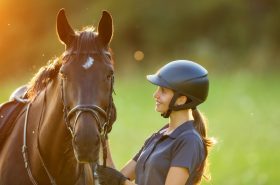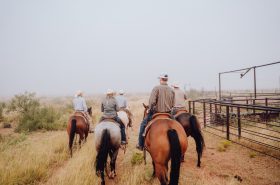Every rider knows that reins are an important piece of tack.
And if you’ve ever had them break(like I did at a barrel race once), you’ll know just how necessary they can be!
But what type of reins are best for you and your horse? If you ride Western, you have four
standard options:
Split Reins
When most people think of Western riding, they probably think of split reins. Usually made from
two strips of leather of varying length and width, split reins are used for training as well as
events like Western pleasure, horsemanship, reining, and cutting.
The rider can hold split reins in a variety of ways, but the traditional “pistol grip” is used in
competition. This is where both reins are held in one hand, with the index finger between the
reins. The “trainer’s hold” or “bridge” is made by crossing the reins over each other and laying
one rein on each side of the horse’s neck. The rider then holds one rein in each hand or both
reins in one hand.
Romal Reins
Romal reins come from the traditional Spanish vaquero style of riding. They are usually made
from rawhide and consist of two parts: the reins and the romal, a single piece that connects to
the reins. The romal usually has a strip of leather on the end, called a “popper” and was
traditionally used to move cattle.
With romal reins, one hand is used to hold the reins and cue the horse, while the other hand
controls the romal. This style of reins is more popular on the West Coast, often used for reining
cow horse competitions, as well as for trail riding and several other events.
Roping Reins
Roping reins consist of a single piece that attaches to the bit or hackamore on each side.
They are typically made of leather, braided nylon, or cotton. Though they are called “roping
reins”, they are used for all types of speed events including barrel racing.
In competition, roping reins are usually kept short and held with one hand.
Mecate Reins
Mecate reins are usually used with a bosal, the traditional hackamore of the Vaquero tradition.
This type of rein is made of horse mane or tail hair, mohair, or nylon and comes in several
different thickness options. Mecate reins come as one long piece, making a loop around the
horse’s neck and attaching at the bottom of the bosal. However, one long piece is left which is
used as a lead rope that is tied to the saddle horn while riding.
Young horses in training are often ridden in a bosal and mecate reins, and some people may
even trail ride in them. Young horses can also be shown in bosal and mecate reins in certain
disciplines.
Mecate reins are usually held in two hands.



